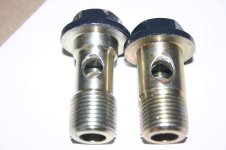grsthegreat
Super Star Member
Sorry for the confusion.
No the squeal was still there and the HST charge pressure was the same. What I measured was the pressure before the filter.
You should get yourself a service manual. Check with your dealer they are about $100 or so. There is some good information in there and a bunch of stuff that should be in the owners manual.
Got one...ive used it a few times already.

